West Virginia University
in Vendée, France

The catch of the day...
June 11, 1998
Today we're up with the early risers. With special permission we have been
authorized to visit the inner workings of the fishing port of Les Sables. Access to
this site is closely controled by French and European authorities charged with assuring
the safety of the food supply. Here, the WVU-Vendéens look on as the
"criée", the auction of the night's catch, takes place. Having grown up
in South Georgia, this climate reminds me much of the tabacco sales I remember from my
childhood. There is something universal about the song of the auctioneer.
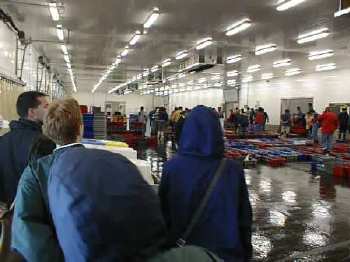
Below, the Vendéens examine the lobsters brought in this morning. On the
coast of France, almost all of today's catch will be consumed fresh before the day is out.
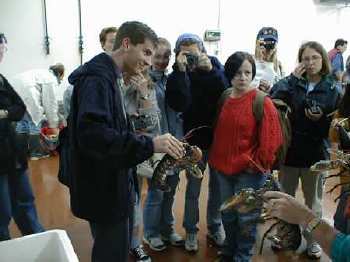
Here, our guide Jacqueline holds up an "aiglefin", a highly appreciated
fish known to us as the "haddock".
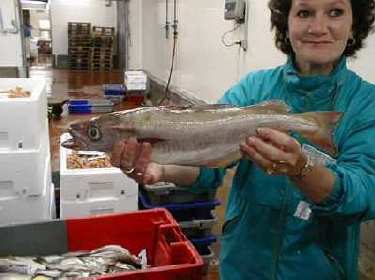
Below, we see the difference between the lowly lobster on the right and the
delicious "langoustes" on the left.
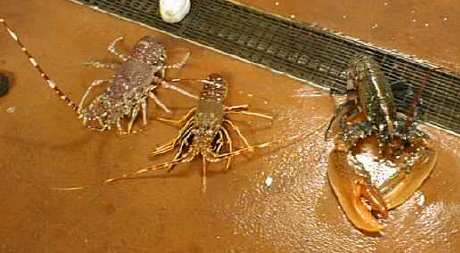
Not one of the most sought after food fishes, the shark below will be dressed and
labeled "veau de mer" ("sea calf") when it is sold on the city market.
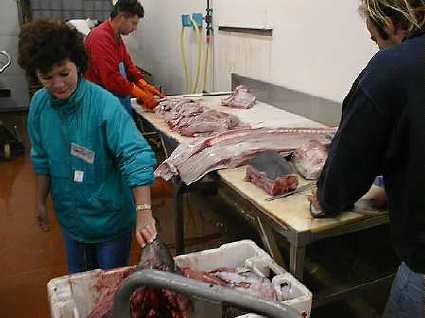
After identifying dozens of species inside the market, we board the Mariluce, a
"chalutier" or trawler headed this evening for a fortnight in the north
Atlantic. The crew hopes to return to Les Sables with 10 tons of fish and 4 tons of
crustaceans.
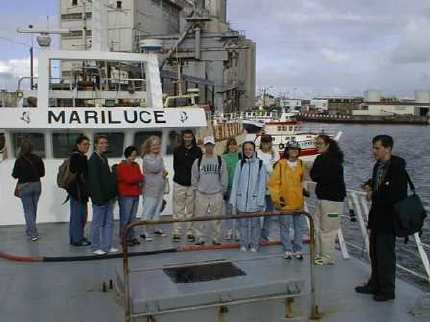
The captain of the Mariluce invites Jacqueline to lead the Vendéens on a full
tour of the ship.
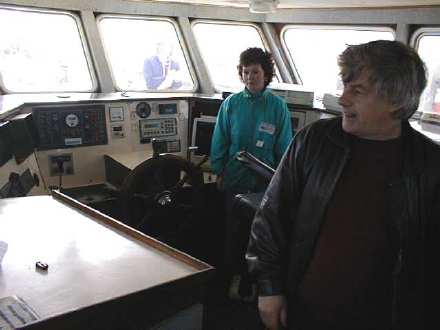
Kate Wright says the sleeping quarters, though tight, may not be so
uncomfortable after all.
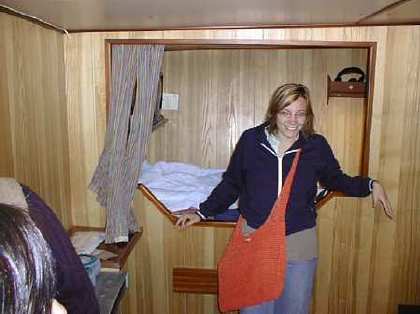
The engine room, on the other hand, is not a restful place for those sensitive
to loud noises.
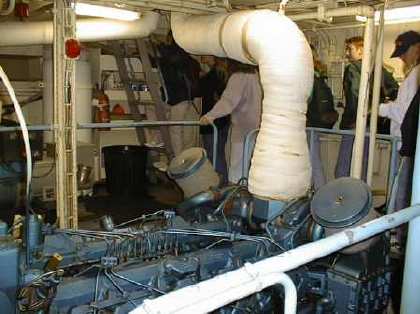
After a break for lunch, the WVU-Vendéens board a much smaller boat for a tour
of the "routes des salines", the road of the saltmakers.
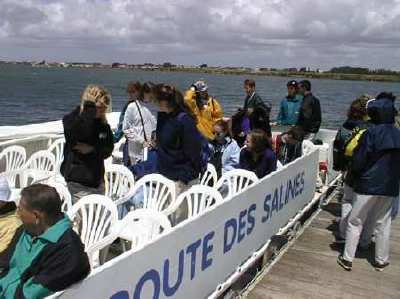
Here, we head up the inland waterway toward the "marais", the manmade
swamps dating back to the times when the Romans ruled this land and its sea.
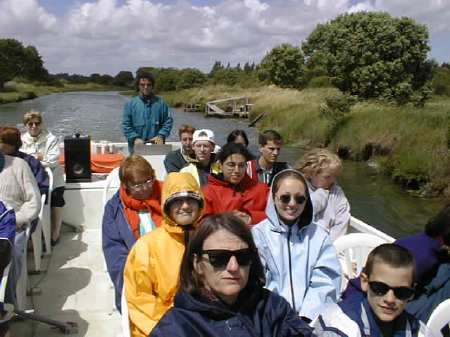
The "marais" were designed to control the depth and temperature of
the salt waters in order to exploit their fullest potential. Below is a pool
designed for growing fish, especially the "civelle", a small eel that is
considered a delicacy in this region.
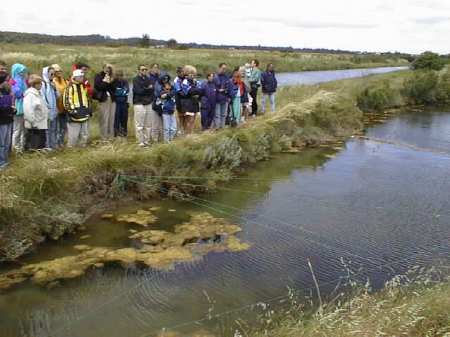
From the time of the Romans up until very recently salt was one of man's most
precious commodities. Its primary function was to allow the preservation of food
over long periods of time. Fishermen and landlovers alike could easily have
starved in winter without the food salt allowed them to keep. Precious services were
often recompensed with this substance, which was in a way more precious than gold -- thus,
the origin of our work "salary". Below, the heart of Vendée is
formed in the giant clay "saline", and elaborate system of large clay reservoirs
designed to use evaporation and waterflow to capture the salt in the sea water brought
here through the marais.
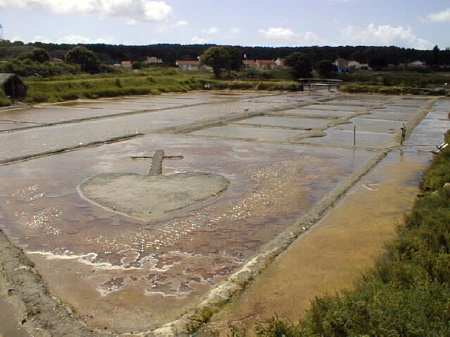
The "salicorne", a greatly appreciated plant that grows in high-salt
areas, is often processed and served like a delicate pickled cucumber. Raw, the
plant reminds me a bit of a tender, juicy, and salty form of goat sorel. Our guide
jokes about the plants other reputed properties, calling it the "saltmaker's
Viagra".
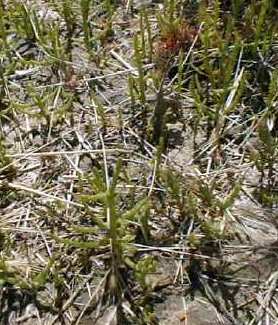
Here, Cristy Vogel takes one last look at the "salorge" or salt house
where the salt is stored before being taken to market. We're soon back on the bus
for the five-minute ride back to downtown in Les Sables.
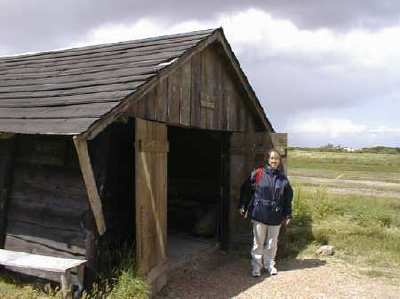
Stay tuned to WVU-V!
Go on to June 12, 1998.















